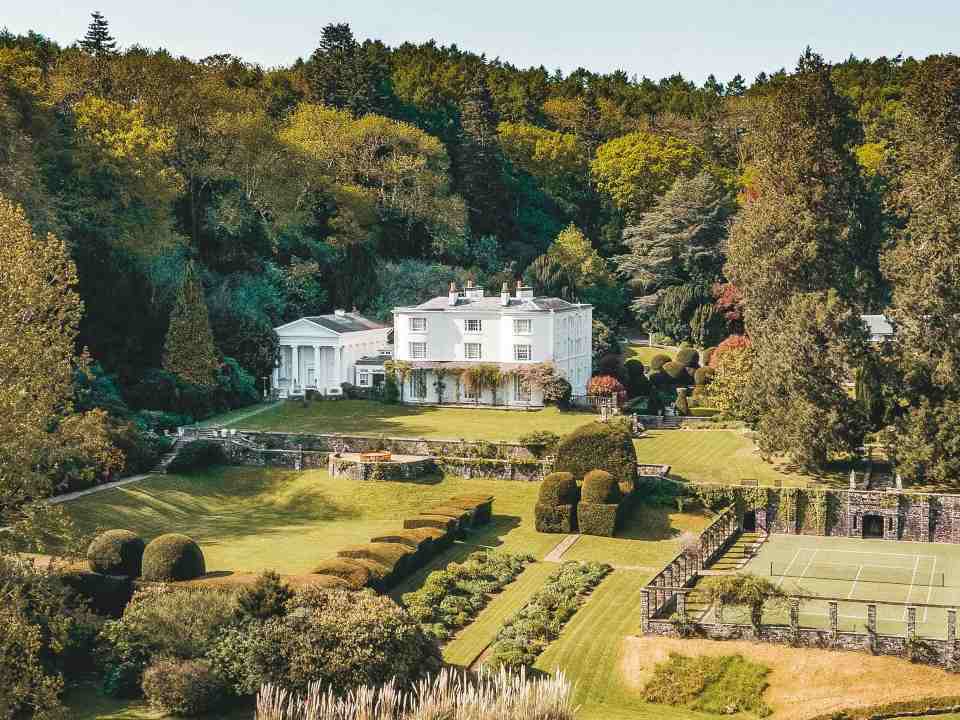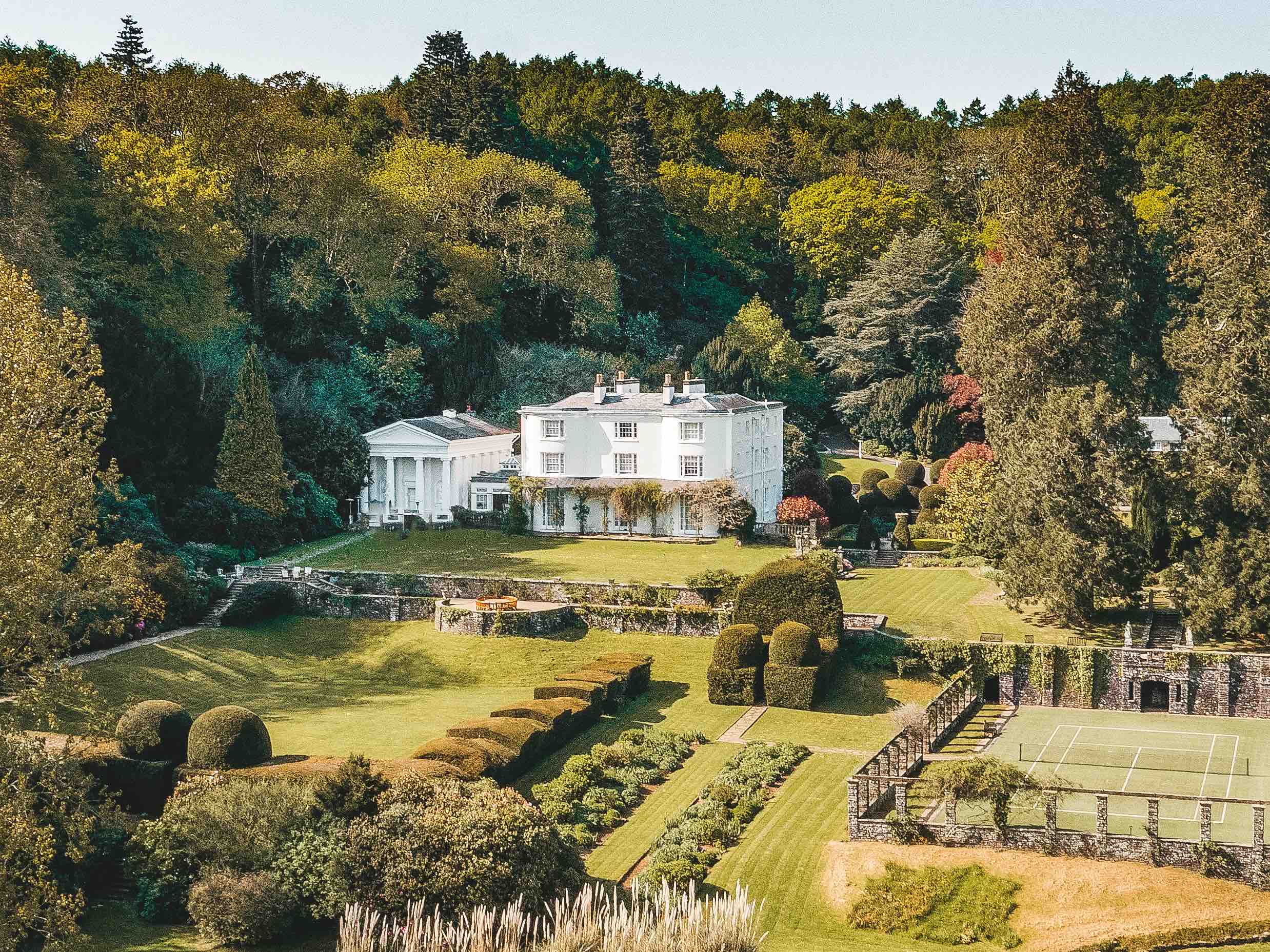As trophy homes go, the Grade II*-listed Glen Usk is hard to top. Set on the west bank of the River Usk in Wales, it is a white rendered neoclassical fairy-tale of a Georgian country house and its current owners have thoroughly renovated the eight-bedroom home, set in 35 acres.
At the tail end of 2021 it went on the market with estate agent Fine & Country for £6.5 million. In November the Monmouthshire property’s price was dropped by £2 million after failing to find a buyer (and also to reflect a decision to reduce the amount of land to be sold with it from 75 acres to 35). Three months later, it is still on the market.
In the post-pandemic property market prime country homes, great and small, were a hot ticket as buyers raced for space, mobbing the West Country, Wales and the Cotswolds on the hunt for picturesque getaway cottages and new-life-in-the-country houses. Prices soared in a much-needed shot in the arm for the prime country sector – defined as the top 10 per cent of rural and provincial properties – which had never properly recovered from the twin blows of the financial crisis and Brexit.
But the rebirth of upscale country living has been short-lived and experts say that across the UK the prime country market appears to be leading the country into the next – downward – phase of the housing cycle.
The first signs of trouble in this sector began to show last year. While annual price growth rates are still in the black at 5.9 per cent, the latest Knight Frank UK Prime Country House Index reported a 0.1 per cent drop in price growth in the third quarter of 2022. Part of the reason for this is that the great pandemic race for space has run out of steam as workers return to their offices and normal life resumes. Last year Londoners bought 81,200 homes outside the capital, compared with the 100,540 purchased in 2021 according to research by estate agents Hamptons.
Covid brought a shot in the arm for the prime country sector – the top 10 per cent of rural and provincial properties – which had never properly recovered from the twin blows of the financial crisis and Brexit
On the ground, agents say the prime country market is being stymied as increasingly price-sensitive buyers butt heads with stubbornly bullish vendors. And even super-wealthy buyers, they point out, don’t like the idea of overpaying. ‘There is considerably more caution amongst buyers… due to the higher cost of purchasing, increased mortgage rates and the anticipation of what might happen in the year ahead,’ said buying agent Ben Horne, head of country buying at Middleton Advisors.
On the other side of the fence Nigel Bishop, founder of buying agency Recoco Property Search, said vendors are showing a collective reluctance to wake up and smell the coffee. ‘The vast majority of owners, particularly those who aren’t in a rush to sell, believe that the market is still as it was in 2021/22 and that they can achieve prices at those levels,’ he said.
In Wales, one of the pandemic’s hottest country home hotspots, Carol Peett, managing director of West Wales Property Finders, reports that buyers are less willing to fling cash at pretty country homes than they were a year ago. But she believes that what lies ahead is a gentle return to reality after the heady days of 2021 and 2022 rather than a catastrophic crash. ‘I think the market in 2023 will be solid if the asking price is realistic but it is not going to be a question of getting fanciful prices and going to sealed bids as has been seen during the Covid-19 years,’ she said.
The prime country market is of course a broad church, spanning everything from vast sporting estates to diminutive harbourside cottages. Horne said there is still good demand for period ‘edge of village’ homes – which combine the convenience of amenities close by with an ‘in the sticks’ vibe – priced between £2 million and £5 million.
In East Anglia Bruce King, director of Cheffins estate agents, agreed that as memories of lockdown life fade buyers are increasingly keen to live in well-resourced villages with plenty to do on the doorstep. ‘Criteria for buyers tends to be villages with all the bells and whistles, including shops, pubs and in an ideal world, a school and a train station,’ he said. ‘While a big garden is still desirable, it’s connectivity people are looking for now, while being able to enjoy the country lifestyle at the same time.’
What is not selling, said West Sussex-based buying agent Michelle Hendrie, of Property Acquisitions, are homes needing work or with shortcomings. ‘The houses that are sticking are those that need renovating, due to the increased cost of materials and supplies, or in a bad location – on a loud road or next door to a pig farm or a line of pylons,’ she said. ‘We are also finding listed homes are not as popular as they once were, which I suspect is due to concerns over rising energy bills.’
Buyers are also shying away from huge houses with masses of land because of the cost of running and maintaining them. ‘People are buying smaller houses where they can manage the garden themselves and don’t need to shut down three bedrooms because they’ll only be used at Christmas time,’ she said.
While some country homes will undoubtedly fare better than others over the next couple of years, the overall forecast is gloomy. Knight Frank is predicting a 5 per cent drop in the average price of prime country real estate in 2023, followed by another 3 per cent drop in 2024, before returning to modest annual growth of 3 per cent thereafter.
In Surrey buying agent Richard Winter is a little more optimistic – but not much. ‘I think there will be little to no growth during 2023,’ he said. ‘The market has grown sharply over the past two to three years so the trajectory was due to slow even without the economic pressures we have seen over the past year.
‘The boom of buyers looking to change their lifestyle during Covid has returned to more normal levels, and with borrowing costs rising and a fairly dark economic outlook, caution will inevitably come in and limit price growth.’







Comments